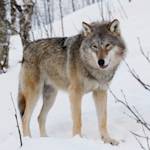European mink
1996 CE • Europe
"The European mink is one of the most endangered mammals in Europe . . . Its range has been reduced by over 97% since the mid-19th century . . . The historic range of the European mink extended from Finland to east of the Ural Mountains, and south to to northern Spain and the Caucasus Mountains. Over the last 150 years, scientists have reported a severe decline in its populations and its extirpation or reduction within most of its former range. The current range consists of a few isolated fragments: in northern Spain and western France, in the Danube delta in Romania, in Ukraine, and in Russia. In Estonia, the last wild individual was found in 1996 . . . In the last ten years, there has been a loss of over half the population, an issue that is predicted to intensify in the next ten years. This may result in a decline rate exceeding 80% due to habitat degradation and loss and the effects of introduced species, such as the American mink . . . The main threats to the European Mink are habitat loss and degradation, overexploitation, illegal hunting, and impact of invasive species. In Europe, human activities have resulted in large-scale alteration of landscapes, environmental change, and disturbance which has had a substantial impact on its habitat."
"European Mink," Global Conservation.
Image: zoofanatic, CC BY 2.0, via Wikimedia Commons


Learn about Maya Lin’s fifth and final memorial: a multi-platform science based artwork that presents an ecological history of our world - past, present, and future.

Discover ecological histories and stories of former abundance, loss, and recovery on the map of memory.

Learn how we can reduce our emissions and protect and restore species and habitats – around the world.

See how art can help us rethink the problems we face, and give us hope that each one of us can make a difference.

Help make a global memorial something personal and close to home. Share your stories of the natural world.


